“So I was doing these self-flagellation things with flowers,” says Genevieve Belleveau casually, while taking a stroll along a trail of Los Angeles’ Vista Hermosa Natural Park. It’s the beginning of spring following an unusually rainy winter and it’s still wet and muddy on the chillier side of the afternoon. The California-based artist is talking about how a project where she assumed the life of a tonsured monk led her to her BDSM practice and ‘eco-fetish’ art objects of her Sacred Sadism series. “It was because of this spiritual tradition, of pain as transcendent act that exists in Western religion, that was kind of like the bridge that made me be like, ‘well, huh, I’m doing this to myself’. I had done one performance where I did do it to other people, not thinking of it as BDSM but as like a floral healing technique.”
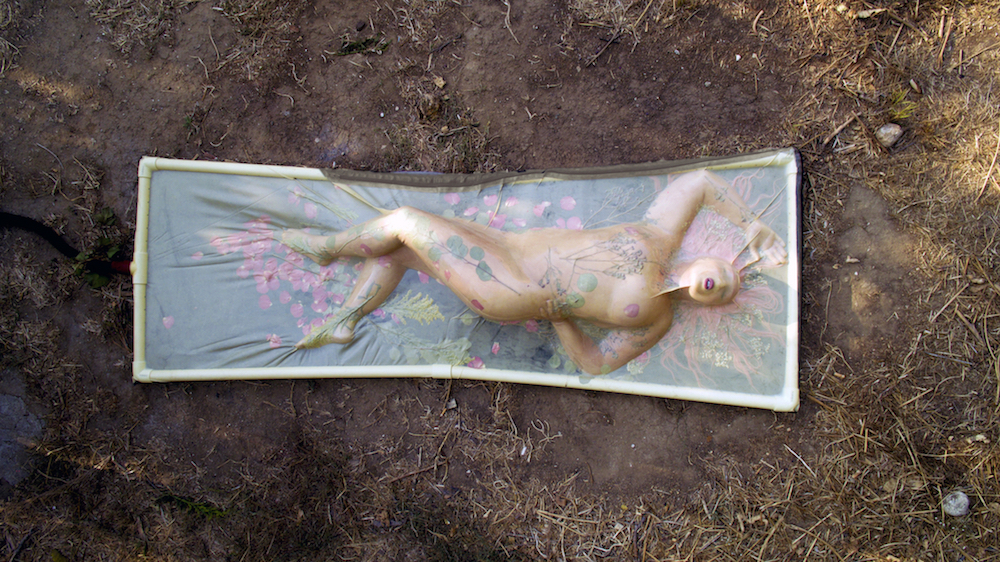
The first time I encountered Belleveau in person was in the private-residence-come-art-space of Garden Los Angeles in Angelino Heights, where her Circlusion solo show was coming to a close with her ‘Plant Play 101’ presentation. Here, Belleveau appeared in an ass-less latex skirt to candidly demonstrate the mechanics and effects of inserting a peeled ginger butt plug in your rectum, while being whipped with thorny roses. Husband and collaborator Themba Alleyne would do the honors over the ‘Sacred Sadism Impact Pony’, flanked by gorgeous Bark Beetle Paddles, banners of vacuum bed drone photography and stray orange flower petals.
“We’ve done a couple of tabling events where people come up and think that they’re looking at real plants, or real succulents and have this moment where they realize it’s a sex toy, or a BDSM tool,” Belleveau tells me about Sacred Sadism’s pretty glass terrariums and their discrete aloe plant dilators, while we’re walking at the urban park a couple weeks later. “It’s like this veil falls from people’s eyes and it’s an ‘aha’ moment that’s really interesting to see, over and over again. And I don’t claim to know exactly what that is either. All I know is it does something to people where they recognize something, either in themselves or outside of themselves, that they didn’t recognize before. It’s super fascinating.”
Vista Hermosa boasts its own sports field and an adventure playground that’s sculpted into a turtle, a snake and a bench shaped like fish. It has a so-called ‘grotto’, with a view of downtown Los Angeles on one end, inner city school kids and plants scattered everywhere else. Belleveau is explaining the TPU masturbation sleeves she is developing and a performance of “human floral arrangements” she had live-streamed one morning from the park to Art Basel. All these distinct contextual elements set a seemingly incongruous scene that shouldn’t make sense but somehow does. That’s particularly when coupling a relational and social art practice with a strong ecological aesthetic and a frank conversation about the sexual, therapeutic and intellectual value of BDSM.
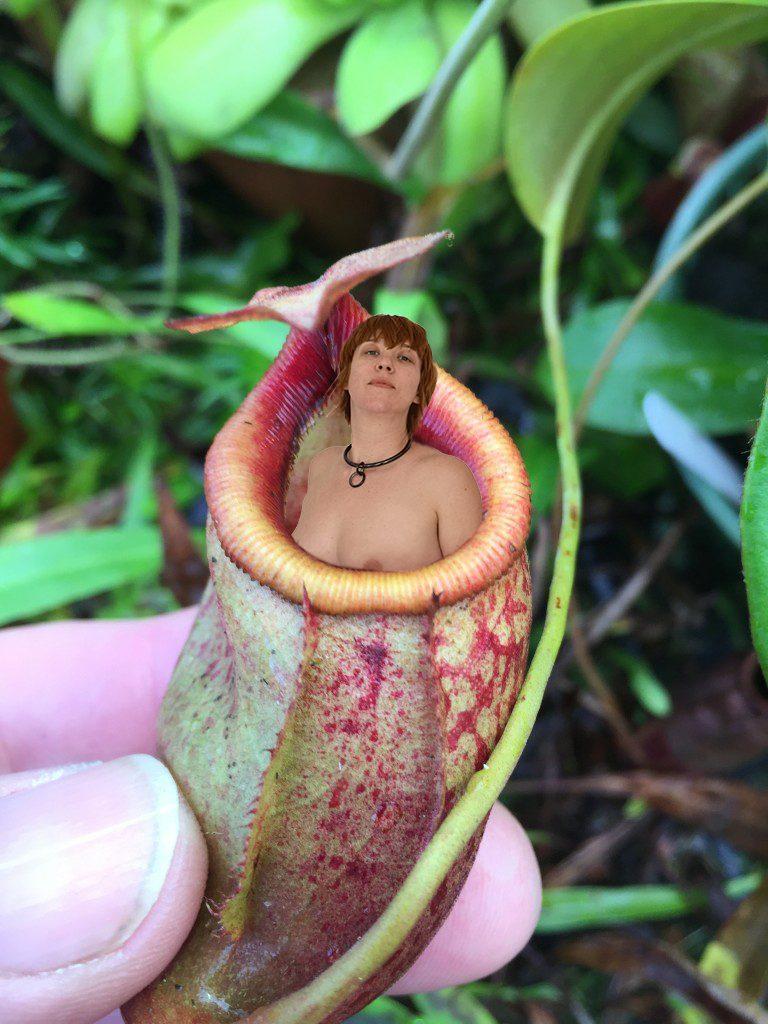
**The main thing that struck me when I was watching the ‘Plant Play 101’ demonstration was this idea of the divine potential of pain.
GB: I think it’s something that a lot of people who are pretty deep in the practice of BDSM understand. It’s a pretty well documented thing. There’s a thing called ‘subspace’, that if you’re the person bottoming, you can go into what’s described as a transcendent headspace. It’s really similar to religious people–monks, nuns, people who use self-flagellation–inflicting pain on themselves and all that to meet God, which is how I became interested in BDSM.
I feel it’s easy to look at people beating each other up, or doing these things to each other and just think, ‘oh, that’s fucked up’. I know that mentality. It’s pathologized, and it’s been pathologized until pretty recently. It was in the DSM [Diagnostic and Statistical Manual of Mental Disorders] as a psychological disorder but it’s definitely, to me, a door to transcendent physical, spiritual, psychological states, and healing. A lot of people who have chronic pain or other types of illness tend to gravitate towards it as a way of harnessing the pain, taking control of it and finding a way to utilize it.
**The idea of taking control of one’s pain is a comforting thought.
GB: I’ve thought about this relationship with my husband is the first time I’ve ever felt exploring the submissive role in a BDSM relationship. Kink is a super, super whitewashed space, and being the only black person in those spaces opens you up to fetishization. That’s why I think of this project as, in my case, an unsettling practice and, in Themba’s case, a decolonial practice.
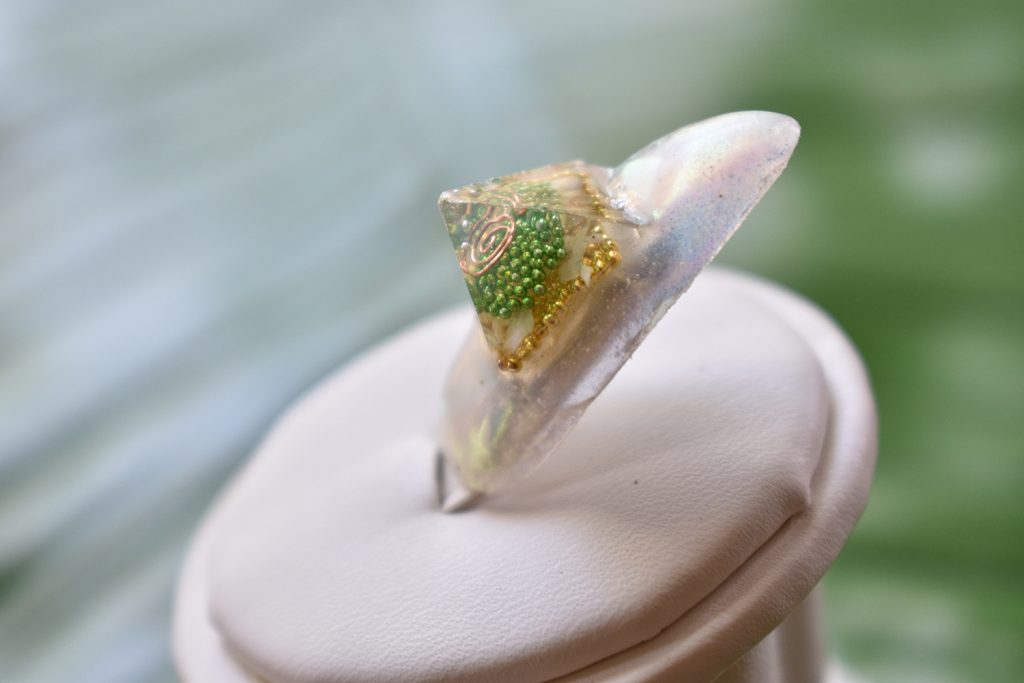
I’m not ready to publish it because I don’t know where to go with it but I’ve written about the privilege of submitting because, if I think of it for myself, would I want to submit to a white dude? Is there something happening there with race and my relationship? I have to look at that, and examine that, and pull that apart. Would I also want to submit in the same way, if I was in constant pain? Is it because I’m able-bodied and quote ‘healthy’ that makes me willing to experience pain? I’ve titled that thought process ‘the perverse privilege of submission’ because I came into BDSM from more of a femdom stance, and there were some years where I was doing more indie femdom-ing stuff.
I feel, in some ways, the public imagination of BDSM is often the dominatrix and a white man in a business suit who needs to be beat down because he has so much power, he can’t even take it anymore, you know what I mean? I think it’s interesting that that has become such a stereotype, in a way. I feel it’s in the public imagination in a different way than for someone who’s sick or in pain, choosing that pain for themselves—that’s not most people’s first thought when they think of BDSM.
**How did the plants become a part of it, is this an existing scene or is it specific to Sacred Sadism?
GB: There is plant play in BDSM. All the things we did in the workshop are things that already exist. We wanted to do that to show that most of our preconceived notions about whips, and chains, and leather, and latex, and all of those things, are not all that exists because I think that’s a major barrier for the public imagination’s view of BDSM. I found that by just switching the aesthetic to something that’s universally palatable, it’s so easy for people to get into it. Like, plants, who has a problem with plants?
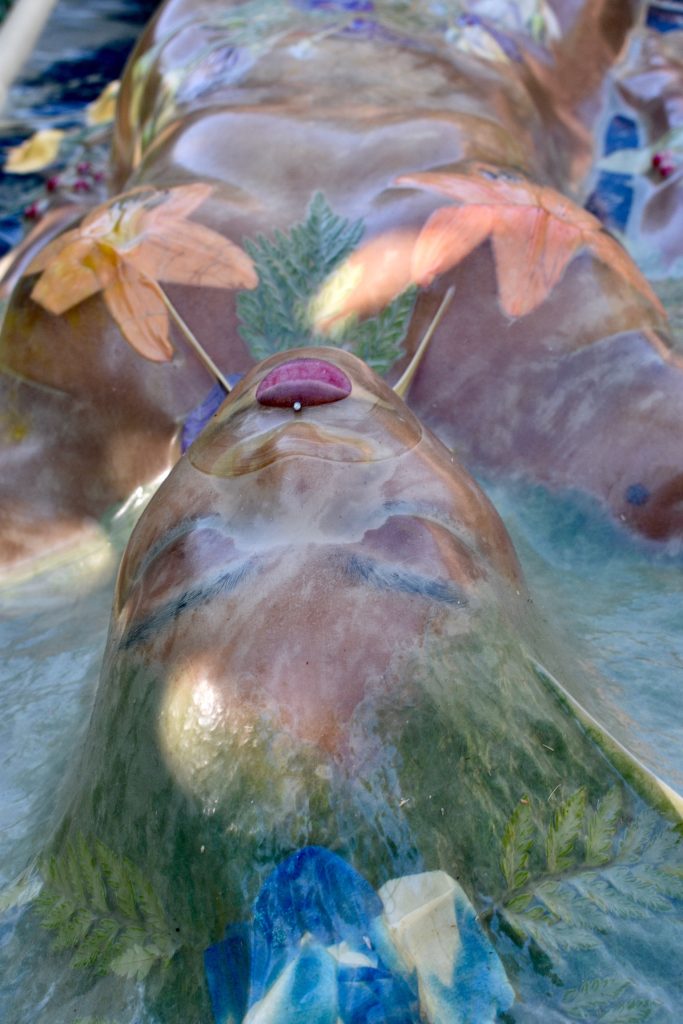
**It’s interesting that you don’t consider yourself an image-maker or an object-maker because the documentation of those ‘Pressed’ works, using the vac beds, are so striking.
GB: I mean I can do it. It’s just not what I actually care about. With any of the work I do, to me, it’s always the social aspect, which is the most important and most interesting part. I’m always trying to figure out how to get people to understand the backbone of it, or the meat of it. To me, the meat of those images is the consent and what went into making them because [the vac bed] is considered a deadly piece of furniture. They don’t do it at professional dungeons because you can die in them. It’s not a low-key BDSM activity. So everything that went into making those images is so much more interesting to me than the images themselves.
**So it’s more a Venus flytrap meant to attract people.
GB: Exactly, that is the best analogy for it, thank you. I think carnivorous plants are super interesting in that way but, yeah, to me images are just buffering agents. It’s something that you use to deliver a message. That’s what art to me is, granted not all artists have a message to deliver and don’t have to–aesthetics can be purely enjoyed. It depends on where you lie on that issue philosophically but I do consider myself more of a conceptual, relational or social artist. All these things are way more interesting to me and I’m glad that the aesthetic gets people interested. If I can figure out how to do the bait-and-switch, we can get people to be looking at some of the more historical elements of it as well.
**Is bait-and-switch a BDSM term?
GB: Bait-and-switch is a business term, where you bring someone in on a sale, they get there, the object’s not there and you try to sell them on something else. I really like the term ‘righteous bait-and-switch’ because it’s not the idea that you’re tricking someone into something bad or stealing from them but rather the idea is to move away from this idea that we’re just going to change the world by buying things.

The idea of running a business is something I’m doing but it’s not to live. I have a day job. I’m not trying to become the Walmart of BDSM toys or something.
**It’s interesting to think about the relationship between violence and beauty.
GB: In some way nature is violence you know what I mean? I always want to put quotes because ‘nature’ is such a stupid catchall, so I really don’t use that term, at least in the way that it’s usually applied to this project. But using those aesthetics of nature, I mean, there’s violence in all of this, if you want to frame it that way. I think that’s what’s very interesting to me about those aesthetics. We’re hoping that it leads people down the path of, it could be violence or it could be interdependence and partnership.
**So what is ‘eco-fetishism’ and what are you trying to get these people to think about?
GB: Initially, I was using the term ‘ecosexual’, which, I don’t know if you’re familiar with Annie Sprinkle and Beth Stephens’ work on it. They have been working for, I think it’s been a while now, since the early two thousands, through this term, which is about reframing your relationship to the earth. Rather than thinking of her as your mother, think of her as your lover. That was initially an entry point for me to get people to understand where I was coming from with the project but the more I thought about it, the more I realized I’m not really in line exactly with those same principles.

I’m not trying to shit on their projects, I actually think it’s very important but I just am not exactly aligned with this idea of imposing your sexuality on the earth. This idea of, ‘oh, we’re going to go and make love to the mud, or fuck the waterfall’. To me, that just reproduces a colonial dominator model system, where you’re, ‘everything’s mine for the taking, and I get to do whatever I want with it, and if I’m horny for it, I’ll just go rape it.’
My friend coined the term ‘ecofetish’ and that makes a lot more sense to me because ‘fetish’ as a word has a really interesting history. The term came from Portugese colonizers going to West Africa where for religious rites they used fetish objects, which were totems that represented and held the power of their deity or their god. I felt that fetishism was a term that worked better because it’s fetishizing the aesthetics of nature instead of being, ‘yeah, nature is mine to impose my sexuality upon’. Instead, let’s take some of the aesthetics of nature, which will help us examine our relationship to it but in a safe way. And by safe, I just mean non-destructive. The underlying goal is to be looking at colonialism, the dominator model–which is the term I use instead of the patriarchy because patriarchy is gendered and I think that doesn’t help people move past it.
**I’m drawn to BDSM because of how it examines notions of dominance versus submission, and how those power dynamics shift depending on the context.
GB: Yeah, I’m reading a book by Riane Eisler, which is really, really difficult for me to get through. She’s a second wave feminist, who also coined these terms ‘dominator model’, ‘partnership model’. She’s also very anti-BDSM, very anti-sex work, very anti-pornography–that sort of wave. But I’m really trying to get through this book because there are so many ideas she has that are so important, and so powerful. A thing I really do wonder about is if we would have kink and BDSM if power wasn’t distributed so unevenly between humans. Would it be kinky? Would it be hot? Would it be taboo?
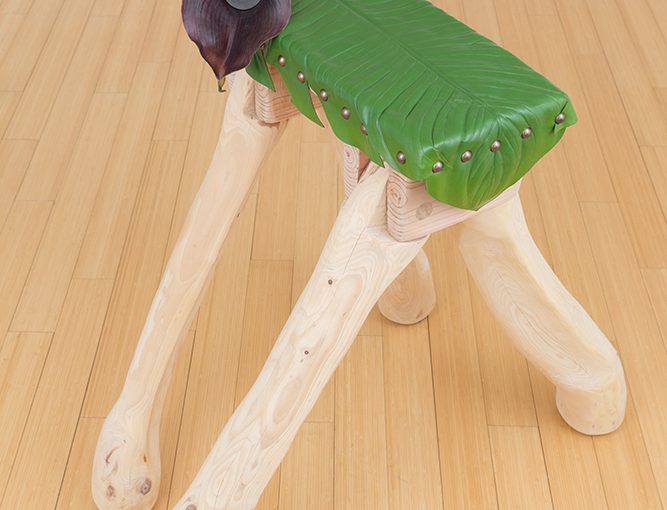
That’s the stuff that is very interesting to think about. I even think if it would be that hot to get spanked if that wasn’t a part of corporal punishment, or, ‘oh, it’s so naughty to submit to somebody’. All of those things, that is what [Eisler]’s talking about. She talks about the eroticization of violence, which is pretty real, unfortunately. I think what she’s missing, though, is the cultural imagination of BDSM and all the intricacies of those actual relationships. All she sees are women being whipped because ‘why would a woman want to be whipped? That’s bad for women’.
**Also, things are as they are.
GB: Right, exactly, but I think speculation is very interesting. Like, ‘what would a world look like where power dynamics weren’t eroticized?’ Because we all know they are in almost every sphere–overtly or not.
**Like watching porn you really know you shouldn’t.
GB: So naughty, so taboo! Yeah. But that’s what [Eisler]’s arguing too, is there wouldn’t be any of that if we were in a partnership with one another, and part of me is just like, ‘well, that’s boring’. I don’t know. I am committed to understanding if we can move towards a way of existing with one another and the natural surroundings.
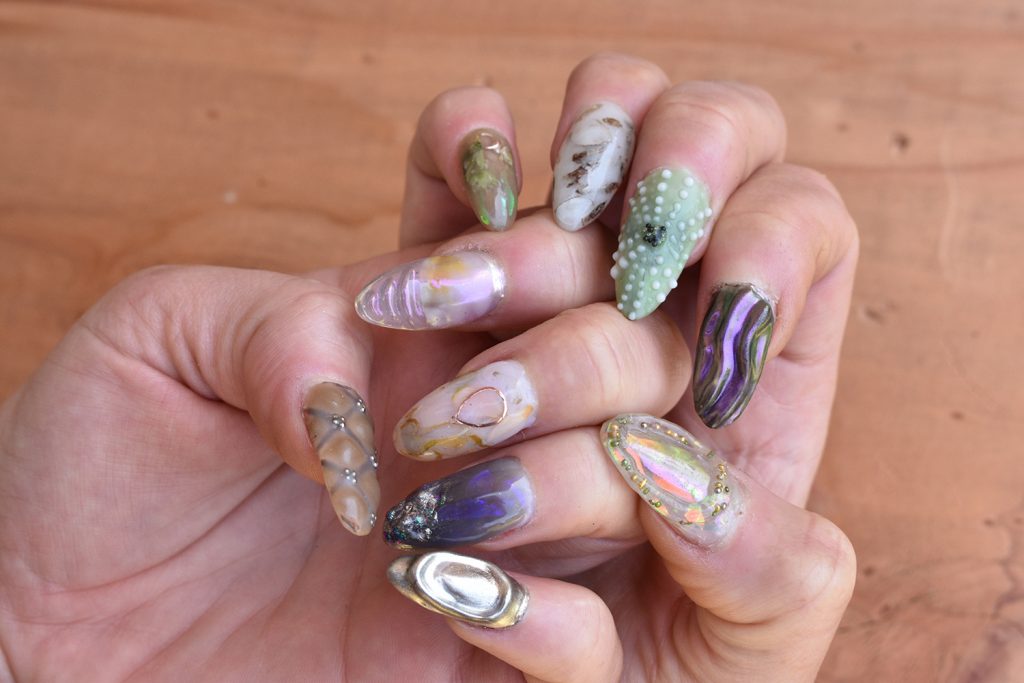
**But I mean you said yourself, nature is brutal and there’s no utopia. Life would find a way to fuck things up.
GB: Yeah, I don’t know. It’s all very prescient and everything about climate change, and the impending mass extinction, which has already happened, is already set in motion. These are things that we either work in partnership, or we will continue to move forward with these extreme changes.
**Kind of when people talk about the end of humanity. It might only be the end of ‘civilization’ as we know it.
GB: Right, exactly. And that thing about understanding the epochs and understanding that these things have happened again, and again, and again, and we just happen to be the creatures who feel so sentient, we should have been able to stop it or something, to have such a belief in our in own supremacy. I do feel like all of that business, economics, and mass extinction plus kinky shit, all of that is what I am researching, and studying, and interested in. Whether people can look past the pretty pictures or not, we’ll see.**













